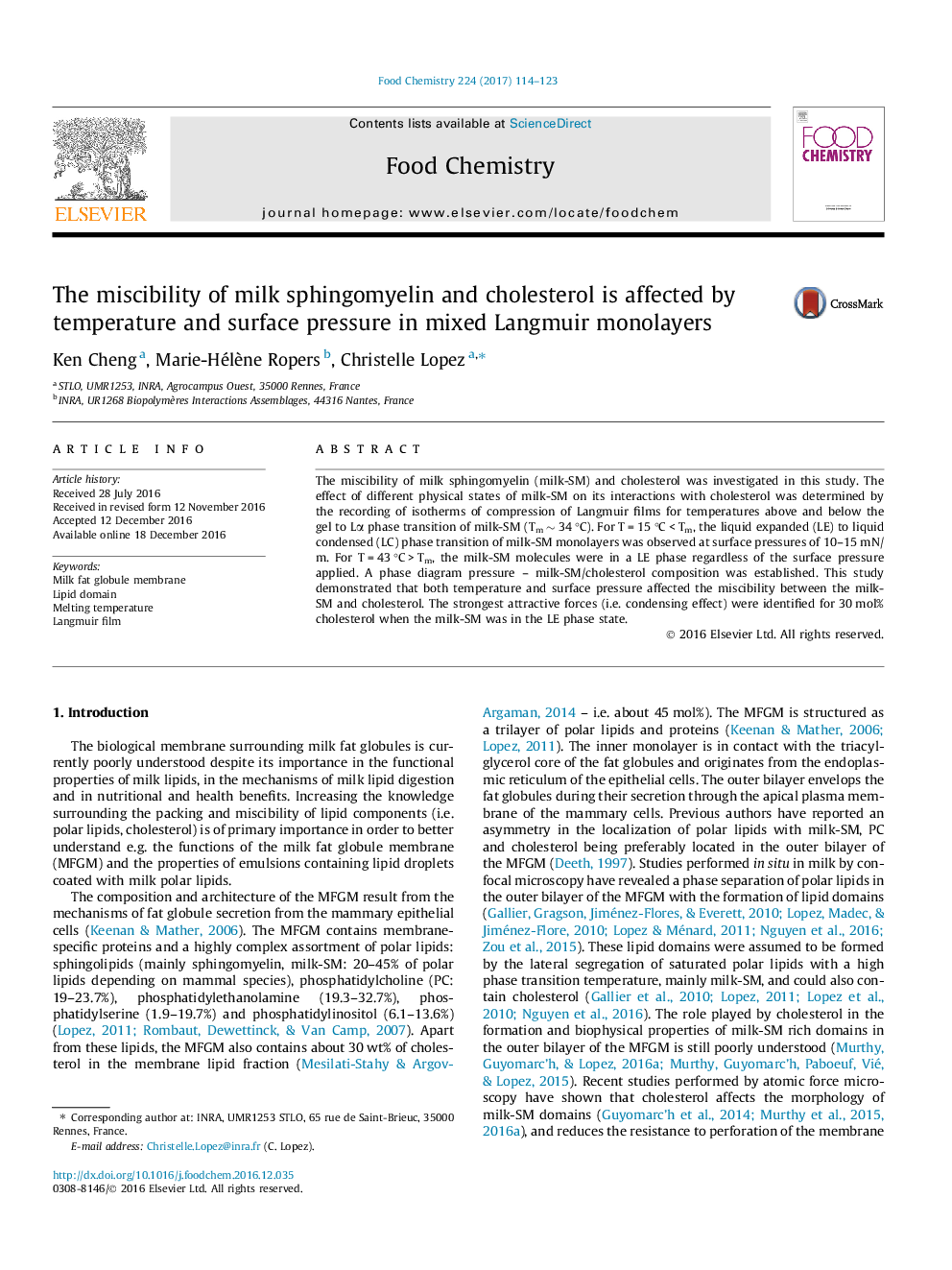| Article ID | Journal | Published Year | Pages | File Type |
|---|---|---|---|---|
| 5133549 | Food Chemistry | 2017 | 10 Pages |
â¢The interactions between milk sphingomyelin and cholesterol are involved in the formation of membrane domains.â¢The melting temperature of milk-SM is Tm = 34 °C.â¢Below Tm, cholesterol has a weak condensing effect on milk-SM.â¢Above Tm, cholesterol and milk-SM are miscible with strongest area condensation for 30 mol% chol.â¢The physical state of milk-sphingomyelin controls its assembly with cholesterol.
The miscibility of milk sphingomyelin (milk-SM) and cholesterol was investigated in this study. The effect of different physical states of milk-SM on its interactions with cholesterol was determined by the recording of isotherms of compression of Langmuir films for temperatures above and below the gel to Lα phase transition of milk-SM (Tm â¼Â 34 °C). For T = 15 °C < Tm, the liquid expanded (LE) to liquid condensed (LC) phase transition of milk-SM monolayers was observed at surface pressures of 10-15 mN/m. For T = 43 °C > Tm, the milk-SM molecules were in a LE phase regardless of the surface pressure applied. A phase diagram pressure - milk-SM/cholesterol composition was established. This study demonstrated that both temperature and surface pressure affected the miscibility between the milk-SM and cholesterol. The strongest attractive forces (i.e. condensing effect) were identified for 30 mol% cholesterol when the milk-SM was in the LE phase state.
Graphical abstractDownload high-res image (192KB)Download full-size image
